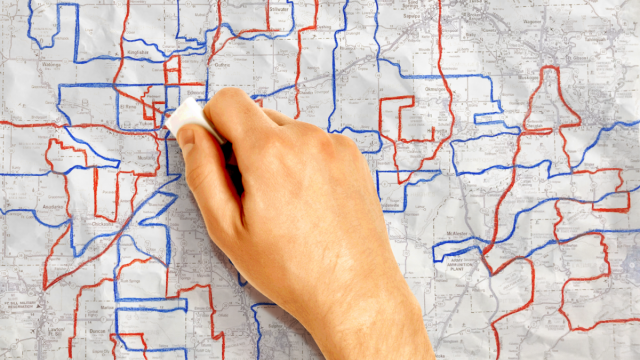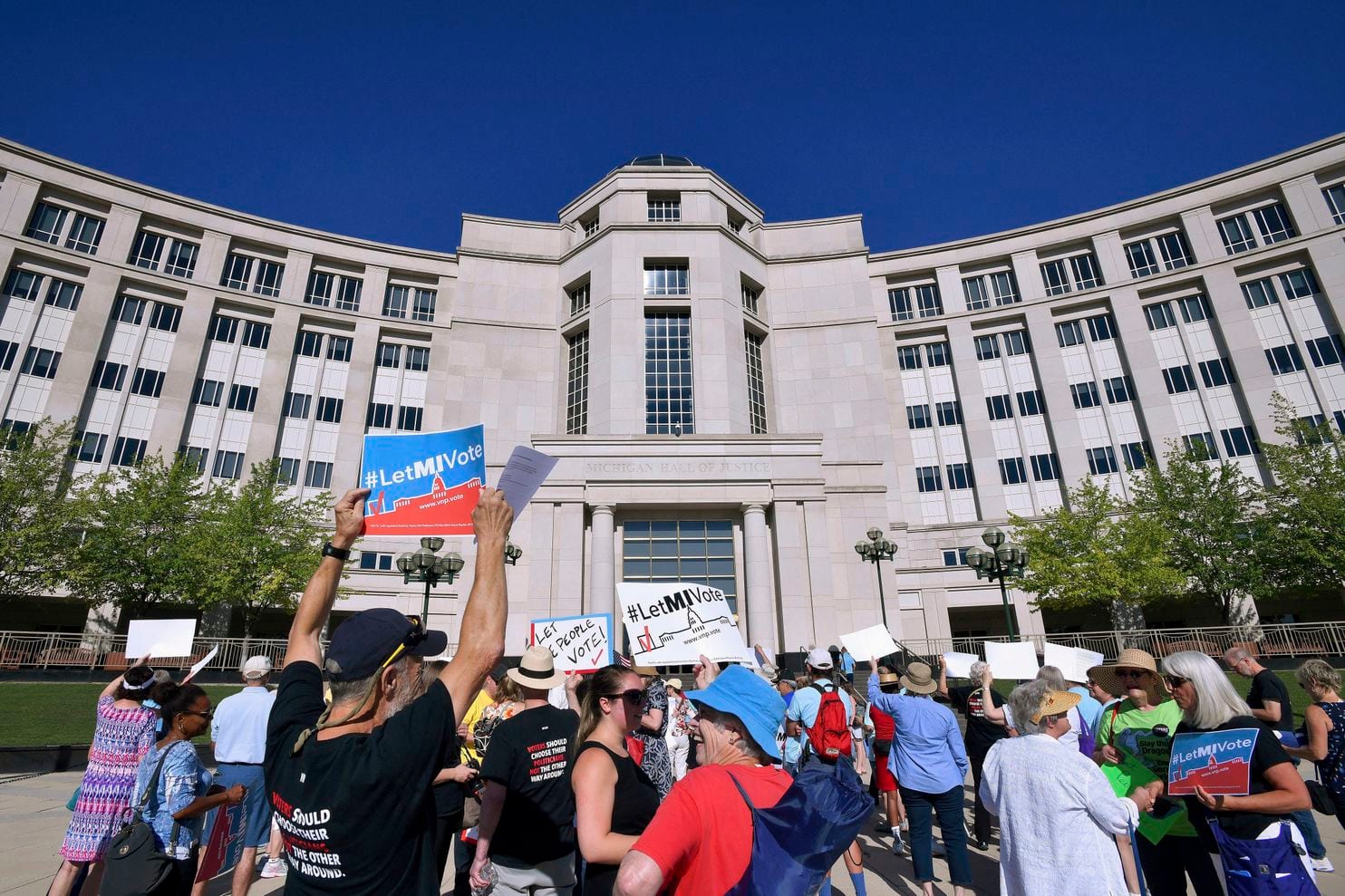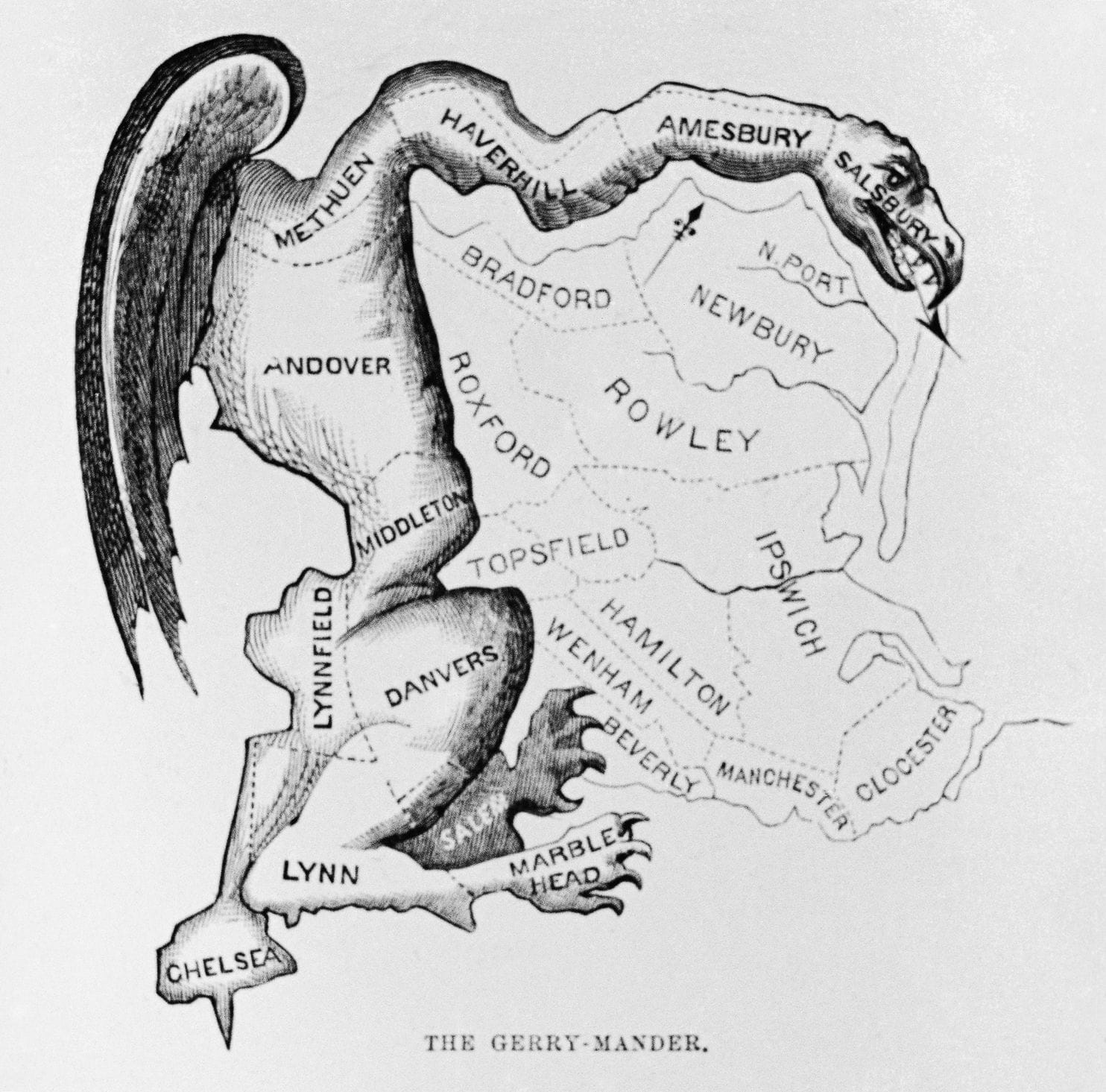
Voters in three states overwhelmingly chose to overhaul how legislative and Congressional districts are drawn, stripping a traditionally partisan exercise from politicians while aiming to create a more level playing field based instead on geography and demographics.
Colorado and Michigan will create independent commissions to decide the boundaries of congressional and legislative districts after the 2020 Census. In Colorado, there will be two commissions, one to draw the congressional lines and one to draw legislative lines. Missouri will now mandate the use of a statistical, nonpartisan model that decides where lines are drawn, as well as the appointment of a state demographer.
A measure in Utah that would create an independent redistricting commission remained too close to call early Wednesday.
The measures were intended to reduce the likelihood of any political party wielding its power to decide where election boundaries should be drawn — otherwise known as gerrymandering, or creating districts that will more likely lead to that party retaining political control.
Tuesday was “a big day in the redistricting world,” said Wendy Underhill, director of elections and redistricting of the bipartisan National Conference of State Legislatures. Voters in Ohio approved a redistricting overhaul in May, and Underhill said citizens are voting on more such proposals this year than at any time in history.
And on Wednesday, federal judges threw out Maryland’s current congressional map, ordering the state to redraw its lines for future elections. Officials have until March to submit a redistricting plan.
The measures passed by large majorities. In Colorado, 71 percent of voters chose to change the way congressional and legislative seats are drawn; Michigan’s redistricting commission passed with 61 percent of the vote; Missouri’s changes passed with 62 percent. Utah’s measure held a razor-thin lead, 50.3 percent to 49.7 percent — a separation of about 4,000 votes — with 76 percent of the state’s precincts reporting, according to the Associated Press.
“In a night where Democrats take the House and Republicans push the Senate deeper red, it is amazing that everyone could agree on one thing: We all hate gerrymandering,” said David Daley, a senior fellow for the nonpartisan group FairVote.
In Michigan, the ballot measure was spearheaded by Voters not Politicians, a nonpartisan group. Elizabeth Battiste, the group’s communications director, said her door-to-door pitch was: “Do you know that politicians draw their own voting maps so they can keep their jobs?” Canvassers shied away from the words redistricting or gerrymandering.
“One woman had a physical reaction — she staggered back,” Battiste said. “In Michigan, we are facing really serious problems about drinking water, about infrastructure. She wanted to know everything.”
Battiste said voters were especially galvanized in places like Flint, where residents felt redistricting slowly eroded their voting power. After state legislative lines were redrawn, the state appointed the city emergency managers who ultimately switched water sources, leading to widespread lead poisoning.
Celebrities including actors Jennifer Lawrence and Ed Helms urged voters to back the measures. Former California governor and “Terminator” star Arnold Schwarzenegger (R) has also backed efforts to, in his words, “terminate gerrymandering,” calling it “one of the biggest scams politicians have ever pulled on the American people.”
Activists across the country are trying to make the issue more approachable for citizens. Some advocates have even donned Halloween costumes in the shape of gerrymandered districts, which can resemble puzzle pieces. In Asheville, N.C., the League of Women Voters organized the “Gerrymander 5k,” during which 350 people walked or ran the meandering line that splits Asheville’s congressional and legislative districts.
Demonstrators rally outside the Michigan Hall of Justice in Lansing, Mich., where the state’s Supreme Court heard arguments in July about whether voters in November would be able to pass a constitutional amendment that would change how the state’s voting maps are drawn. The vote was allowed to take place, and voters chose a new, nonpartisan model for drawing voting districts. (Dale G. Young/AP)“I think redistricting reform has become a sexier issue because I think people understand it,” said Michael Li, senior counsel for the democracy program at the Brennan Center at New York University School of Law. “You go back 10, 15 years ago, and it was a really esoteric issue, it was dry, and that’s completely changed. People understand what we currently have doesn’t work and we need to fix something. And hopefully we can have a robust, nonpartisan debate about what that is.”
Voters in recent years have been opting for ways to overhaul how districts are created. In 2010, California voters created a nonpartisan, citizen commission to establish the state’s voting maps. Arizona voters created an independent redistricting commission in 2000.
Kathay Feng, national redistricting director of Common Cause, a nonpartisan grass roots organization, worked on the California campaign, which is now seen as a model for states that want to have citizen committees.
“In California, we had a system where politicians went behind closed doors and decided where the lines were drawn and ended up hurting communities — communities of color, women interested in running, people in the way of an incumbent,” she said, noting the issue was long seen as “an insider game, that no one was paying attention to, and we were told that it’s so complicated and regular people can’t understand it. But that’s not true.”
Both Republicans and Democrats have redrawn voting districts into odd shapes that benefit their parties for hundreds of years. It started in the early 1800s, when Massachusetts Gov. Elbridge Gerry signed a bill creating a redistricting plan for the state Senate, including a district that looked like a winged dragon. It gave an advantage to his party — then known as the Democratic-Republican Party — and created the term “gerrymandering.” (Gerry went on to become vice president, under President James Madison, from March 1813 until his death in November 1814).
Since 2010, redistricting has largely been under the purview of Republicans, who gained control of Congress and many statehouses and were able to draw new districts based on that year’s Census. The process has been contentious and, some argue, racially charged, because many new districts limit the power of minority voters.
In Colorado, a state congressman was banned from the Senate floors and chamber for the 2011 session for losing his temper during a redistricting discussion. In Michigan, where redistricting maps were first approved in 2011, there is still ongoing litigation over partisan gerrymanders; the trial is scheduled to begin in February. The next round of district lines will be drawn there in 2021, using new Census data.
“Our politics forced these debates to be extreme, and that’s not really where the people were,” Daley said. “There is a structural issue that is silently corroding our democracy, and we all have this sense that something is broken, something isn’t working. And in many ways the underlying issue is that these district lines have gotten twisted in such a way that made our politics more extreme.”
The redrawn maps have led to numerous lawsuits around the country. In North Carolina, a federal court declared the state’s Republican-drawn congressional maps were unconstitutional, calling them an “invidious” plan to favor Republicans over Democrats. But plaintiffs conceded there was not enough time to redraw the maps, and North Carolinians voted Tuesday in the gerrymandered districts.
In Pennsylvania, the state Supreme Court ruled that a congressional map drawn by Republican legislators in 2011 was “clearly, plainly and palpably” a partisan gerrymander. The court drew its own map with the help of an independent redistricting expert, and that map was used Tuesday.
The U.S. Supreme Court has been reluctant to wade into to the issue of gerrymandering. In June, it skirted the issue of whether redrawing districts in partisan ways is unconstitutional, leaving a Republican-drawn map in Wisconsin and one made by Democrats in Maryland intact for Election Day.
The term “gerrymander” stems from this Gilbert Stuart cartoon of a twisted Massachusetts electoral district. Stuart thought the shape resembled a salamander, but his friend called it a “Gerry-mander” after Massachusetts Gov. Elbridge Gerry, who approved rearranging district lines for political advantage. (Bettmann/Getty Images)Originally published by the Washington Post













